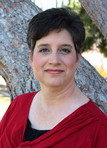Laurisa White Reyes's Blog, page 78
July 5, 2017
WHAT I'M READING THIS SUMMER
I know I'm a little late getting started with my summer reading. I normally pick a theme and read about half a dozen books throughout the summer on that theme. Two years ago it was zombies. Last year it was dramatic, realistic fiction. I'm entering this summer with several books already started, including
A PRAYER FOR OWEN MEANY
by John Irving and
THE PEARL THIEF
by Elizabeth Wein, both historical novels. I plan to read Pulitzer Prize winner
ALL THE LIGHT WE CANNOT SEE
by Anthony Doerr for my book club. I also just finished
THE UNDERGROUND RAILROAD
by Colson Whitehead, which is mostly historical with a slightly fantastical twist. So, I guess my theme this year is historical.
What books are you reading this summer?
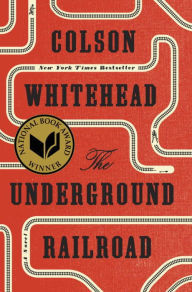
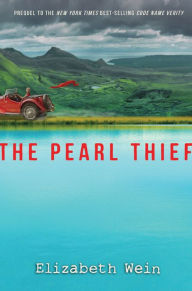
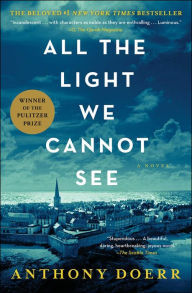
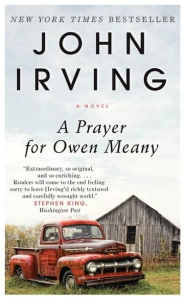
What books are you reading this summer?




Published on July 05, 2017 06:00
July 4, 2017
ON SALE: SERAPHINA SERIES by Sheena Hutchinson
 Title: Seraphina SeriesAuthor: Sheena HutchinsonGenre: YA Paranormal RomanceHosted by: Lady Amber’s Reviews & PR
Title: Seraphina SeriesAuthor: Sheena HutchinsonGenre: YA Paranormal RomanceHosted by: Lady Amber’s Reviews & PR
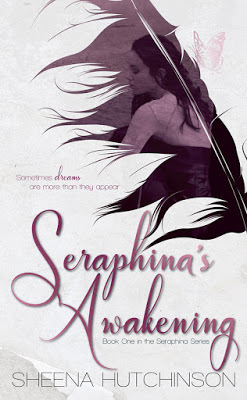 Blurb: One year ago, Seraphina’s entire world seemed to have dived into a mythical land over night. She’s somehow even gotten used to the madness of it all. But what happens when the craziness stops? Things become quiet… too quiet.Sera should have known that things weren’t as quiet as they seemed. After one of the best nights of her life, Sera is forced into this treacherous journey to save one of her loved ones.But following the path of evil begins to take its toll on Sera. As she struggles with her own internal dilemmas, Nate starts to take matters into his own hands. When this unseen world finally begins to affect Sera’s emotions and her relationship, can she hold it together to save her loved ones? Will love conquer all? Or will it turn her evil… forever?
Blurb: One year ago, Seraphina’s entire world seemed to have dived into a mythical land over night. She’s somehow even gotten used to the madness of it all. But what happens when the craziness stops? Things become quiet… too quiet.Sera should have known that things weren’t as quiet as they seemed. After one of the best nights of her life, Sera is forced into this treacherous journey to save one of her loved ones.But following the path of evil begins to take its toll on Sera. As she struggles with her own internal dilemmas, Nate starts to take matters into his own hands. When this unseen world finally begins to affect Sera’s emotions and her relationship, can she hold it together to save her loved ones? Will love conquer all? Or will it turn her evil… forever?

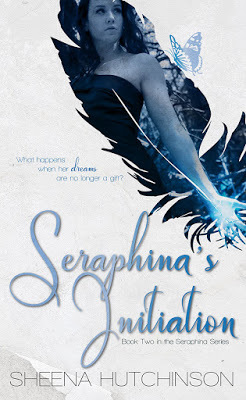 Blurb: Seraphina Cross is unexpectedly thrown into this crazy, spiritual world of Angels versus Demons.Never did she expect to meet Nate who was just a figment of her imagination. Now she finds herself moving in with him because of her innate responsibility to protect her loved ones from harm. Finally beginning to feel at home in her new house and with her new relationship. Nate begins training Sera in all that she can do, surprising even himself at times. Just when she is starting to feel safe and powerful, Lucifer finds a new way to attack her at her most vulnerable. When her dreams are no longer a gift, can Sera control the powers needed to defeat what's coming before Lucifer fulfills his promise to her?
Blurb: Seraphina Cross is unexpectedly thrown into this crazy, spiritual world of Angels versus Demons.Never did she expect to meet Nate who was just a figment of her imagination. Now she finds herself moving in with him because of her innate responsibility to protect her loved ones from harm. Finally beginning to feel at home in her new house and with her new relationship. Nate begins training Sera in all that she can do, surprising even himself at times. Just when she is starting to feel safe and powerful, Lucifer finds a new way to attack her at her most vulnerable. When her dreams are no longer a gift, can Sera control the powers needed to defeat what's coming before Lucifer fulfills his promise to her?

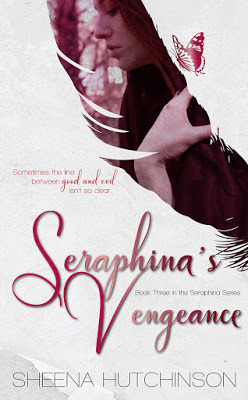 Blurb: One year ago, Seraphina’s entire world seemed to have dived into a mythical land over night. She’s somehow even gotten used to the madness of it all. But what happens when the craziness stops? Things become quiet… too quiet.Sera should have known that things weren’t as quiet as they seemed. After one of the best nights of her life, Sera is forced into this treacherous journey to save one of her loved ones.But following the path of evil begins to take its toll on Sera. As she struggles with her own internal dilemmas, Nate starts to take matters into his own hands. When this unseen world finally begins to affect Sera’s emotions and her relationship, can she hold it together to save her loved ones? Will love conquer all? Or will it turn her evil… forever?
Blurb: One year ago, Seraphina’s entire world seemed to have dived into a mythical land over night. She’s somehow even gotten used to the madness of it all. But what happens when the craziness stops? Things become quiet… too quiet.Sera should have known that things weren’t as quiet as they seemed. After one of the best nights of her life, Sera is forced into this treacherous journey to save one of her loved ones.But following the path of evil begins to take its toll on Sera. As she struggles with her own internal dilemmas, Nate starts to take matters into his own hands. When this unseen world finally begins to affect Sera’s emotions and her relationship, can she hold it together to save her loved ones? Will love conquer all? Or will it turn her evil… forever?Goodreads: https://www.goodreads.com/book/show/34594439-seraphina-s-vengeance

 Sheena is a born and raised New Yorker, who followed her happily ever after to a much more rural town in Maine. When she’s not driving an hour to find a Starbucks or running from bugs that are way to big for her taste, she’s focusing on writing stories that empower and inspire. Sheena always roots for the underdog, believes in love at first sight, and that everyone should have their happily ever after.Author Links: Amazon: http://amzn.to/2uixJZVFacebook: https://www.facebook.com/TheSeraphinaSeries/Twitter: https://twitter.com/Sheena_HutchNewsletter: http://eepurl.com/1QLcnStreet Team: https://www.facebook.com/groups/1514438232123355/Goodreads: https://www.goodreads.com/author/show/7711109.Sheena_HutchinsonWeb: http://www.sheenahutchinson.com/Buy Links: Seraphina’s Awakening: http://amzn.to/2sFqs4gSeraphina’s Initiation: http://amzn.to/2tFraCISeraphina’s Vengeance (Pre-Order): http://amzn.to/2tCLs0e
Sheena is a born and raised New Yorker, who followed her happily ever after to a much more rural town in Maine. When she’s not driving an hour to find a Starbucks or running from bugs that are way to big for her taste, she’s focusing on writing stories that empower and inspire. Sheena always roots for the underdog, believes in love at first sight, and that everyone should have their happily ever after.Author Links: Amazon: http://amzn.to/2uixJZVFacebook: https://www.facebook.com/TheSeraphinaSeries/Twitter: https://twitter.com/Sheena_HutchNewsletter: http://eepurl.com/1QLcnStreet Team: https://www.facebook.com/groups/1514438232123355/Goodreads: https://www.goodreads.com/author/show/7711109.Sheena_HutchinsonWeb: http://www.sheenahutchinson.com/Buy Links: Seraphina’s Awakening: http://amzn.to/2sFqs4gSeraphina’s Initiation: http://amzn.to/2tFraCISeraphina’s Vengeance (Pre-Order): http://amzn.to/2tCLs0e

Published on July 04, 2017 03:00
June 30, 2017
BOOK REVIEW: THE UNDERGROUND RAILROAD by Colson Whitehead
* Book Review: NIGHT SCHOOL by Lee Child
* Book Review: CHAINS by Laurie Halse Anderson
* THE ROCK OF IVANORE on audiobook
_________________________________________
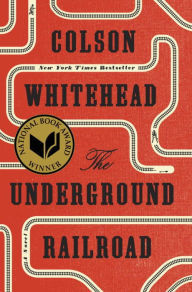 THE UNDERGROUND RAILROAD
THE UNDERGROUND RAILROAD
Colson Whitehead
Knopf Doubleday
Winner of the Pulitzer Prize and the National Book Award, the #1 New York Times bestseller from Colson Whitehead, a magnificent tour de force chronicling a young slave's adventures as she makes a desperate bid for freedom in the antebellum South.
Cora is a slave on a cotton plantation in Georgia. Life is hell for all the slaves, but especially bad for Cora; an outcast even among her fellow Africans, she is coming into womanhood—where even greater pain awaits. When Caesar, a recent arrival from Virginia, tells her about the Underground Railroad, they decide to take a terrifying risk and escape. Matters do not go as planned—Cora kills a young white boy who tries to capture her. Though they manage to find a station and head north, they are being hunted.
In Whitehead’s ingenious conception, the Underground Railroad is no mere metaphor—engineers and conductors operate a secret network of tracks and tunnels beneath the Southern soil. Cora and Caesar’s first stop is South Carolina, in a city that initially seems like a haven. But the city’s placid surface masks an insidious scheme designed for its black denizens. And even worse: Ridgeway, the relentless slave catcher, is close on their heels. Forced to flee again, Cora embarks on a harrowing flight, state by state, seeking true freedom.
MY REVIEW:
An odd blend of historical fiction and fantasy, Colson Whitehead's vision of a literal underground railroad dug by unknown hands to carry runaway slaves to freedom is both inventive and troubling. On one hand, the tale of Cora who escapes slavery under the hands of a sadistic master only to be forever tracked by a ruthless slave catcher kept me turning pages. Cora embodies so much of the slavery narrative, and reminds us of America's shameful past. (Which seems to be Whitehead's true purpose, to point a damning finger at white America.) Cora's story is reminiscent of other historical novels on the same topic: Beloved by Toni Morrison, Roots by Alex Haley, Chains by Laurie Halse Anderson--though it did not, in my opinion, achieve the level of emotional connection of its predecessors.
On the other hand, The Underground Railroad left me feeling both unsatisfied and concerned. I never grasped why the author chose to create a literal underground railroad. I get that the term is, in actuality, a metaphor. And Whitehead probably asked himself, what if it was real? Then set out to write a book about it. Only the railroad itself doesn't play a hugely significant role in the story. It's just there, a convenient mode of escape for her at times throughout the story. While I in no way would criticize Whitehead as an author (he has an impressive list of titles and awards behind him), I failed to see how a literal railroad made this story any better than if Cora's story had been more faithful to actual history.
Another issue I had was that at times the author's language and choice of vocabulary seemed forced. A little too intentionally poetic. It got in the way of the story, but not enough for me to dislike the book. It just made it a little more challenging stay "in" the story.
Finally, what really concerned me the most was the thread of anti-American and anti-white sentiments woven throughout and at times boldly stated. For example, "And America, too, is a delusion, the grandest one of all. The white race believes--believes with all its heart--that it is their right to take the land. To kill indians. Make war. Enslave their brothers. This nation shouldn't exist, if there is any justice in the world, for its foundations are murder, theft, and cruelty. Yet here we are" (285).
And "She'd watched the faces in the park in North Carolina during the daytime, and at night when they gathered for atrocities. Round white faces like an endless field of cotton bolls, all the same material" (277).
And "The Great War had always been between the white and the black. It always would be" (288).
As a white person reading this more than 150 years after the start of the Civil War, in a time when black Americans have more freedom and prosperity available to them than ever before and yet still struggle for complete equality, in a time when hostility between black and white is increasing when it should be decreasing, I can't help but ask if The Underground Railroad intends to enlighten us, or to incite more hatred between the races. I recognize this is a precarious question to ask. I cannot ever claim to understand what it means to be the descendant of slaves, or the recipient of racial discrimination. Whitehead, as a black man, has every right to this narrative, not only as a creative author, but also because of his heritage.
However, it is one thing to tell a story, and quite another to stir up more anger, more hatred. I suspect that is why this book received the awards it did--not necessarily because the book is better than any other book, but because of the timeliness of its message.
The dual nature of The Underground Railroad--as a story and as an overt political statement--is what makes this book complicated. I liked it, but I also am wary of it.




CONTENT RATING:
Profanity: Moderate
Violence: High
Sexuality: High
* Book Review: CHAINS by Laurie Halse Anderson
* THE ROCK OF IVANORE on audiobook
_________________________________________
 THE UNDERGROUND RAILROAD
THE UNDERGROUND RAILROADColson Whitehead
Knopf Doubleday
Winner of the Pulitzer Prize and the National Book Award, the #1 New York Times bestseller from Colson Whitehead, a magnificent tour de force chronicling a young slave's adventures as she makes a desperate bid for freedom in the antebellum South.
Cora is a slave on a cotton plantation in Georgia. Life is hell for all the slaves, but especially bad for Cora; an outcast even among her fellow Africans, she is coming into womanhood—where even greater pain awaits. When Caesar, a recent arrival from Virginia, tells her about the Underground Railroad, they decide to take a terrifying risk and escape. Matters do not go as planned—Cora kills a young white boy who tries to capture her. Though they manage to find a station and head north, they are being hunted.
In Whitehead’s ingenious conception, the Underground Railroad is no mere metaphor—engineers and conductors operate a secret network of tracks and tunnels beneath the Southern soil. Cora and Caesar’s first stop is South Carolina, in a city that initially seems like a haven. But the city’s placid surface masks an insidious scheme designed for its black denizens. And even worse: Ridgeway, the relentless slave catcher, is close on their heels. Forced to flee again, Cora embarks on a harrowing flight, state by state, seeking true freedom.
MY REVIEW:
An odd blend of historical fiction and fantasy, Colson Whitehead's vision of a literal underground railroad dug by unknown hands to carry runaway slaves to freedom is both inventive and troubling. On one hand, the tale of Cora who escapes slavery under the hands of a sadistic master only to be forever tracked by a ruthless slave catcher kept me turning pages. Cora embodies so much of the slavery narrative, and reminds us of America's shameful past. (Which seems to be Whitehead's true purpose, to point a damning finger at white America.) Cora's story is reminiscent of other historical novels on the same topic: Beloved by Toni Morrison, Roots by Alex Haley, Chains by Laurie Halse Anderson--though it did not, in my opinion, achieve the level of emotional connection of its predecessors.
On the other hand, The Underground Railroad left me feeling both unsatisfied and concerned. I never grasped why the author chose to create a literal underground railroad. I get that the term is, in actuality, a metaphor. And Whitehead probably asked himself, what if it was real? Then set out to write a book about it. Only the railroad itself doesn't play a hugely significant role in the story. It's just there, a convenient mode of escape for her at times throughout the story. While I in no way would criticize Whitehead as an author (he has an impressive list of titles and awards behind him), I failed to see how a literal railroad made this story any better than if Cora's story had been more faithful to actual history.
Another issue I had was that at times the author's language and choice of vocabulary seemed forced. A little too intentionally poetic. It got in the way of the story, but not enough for me to dislike the book. It just made it a little more challenging stay "in" the story.
Finally, what really concerned me the most was the thread of anti-American and anti-white sentiments woven throughout and at times boldly stated. For example, "And America, too, is a delusion, the grandest one of all. The white race believes--believes with all its heart--that it is their right to take the land. To kill indians. Make war. Enslave their brothers. This nation shouldn't exist, if there is any justice in the world, for its foundations are murder, theft, and cruelty. Yet here we are" (285).
And "She'd watched the faces in the park in North Carolina during the daytime, and at night when they gathered for atrocities. Round white faces like an endless field of cotton bolls, all the same material" (277).
And "The Great War had always been between the white and the black. It always would be" (288).
As a white person reading this more than 150 years after the start of the Civil War, in a time when black Americans have more freedom and prosperity available to them than ever before and yet still struggle for complete equality, in a time when hostility between black and white is increasing when it should be decreasing, I can't help but ask if The Underground Railroad intends to enlighten us, or to incite more hatred between the races. I recognize this is a precarious question to ask. I cannot ever claim to understand what it means to be the descendant of slaves, or the recipient of racial discrimination. Whitehead, as a black man, has every right to this narrative, not only as a creative author, but also because of his heritage.
However, it is one thing to tell a story, and quite another to stir up more anger, more hatred. I suspect that is why this book received the awards it did--not necessarily because the book is better than any other book, but because of the timeliness of its message.
The dual nature of The Underground Railroad--as a story and as an overt political statement--is what makes this book complicated. I liked it, but I also am wary of it.




CONTENT RATING:
Profanity: Moderate
Violence: High
Sexuality: High
Published on June 30, 2017 06:00
June 29, 2017
BOOK BLITZ: KEEPER UNDER FIRE by Jennifer Malone Wright
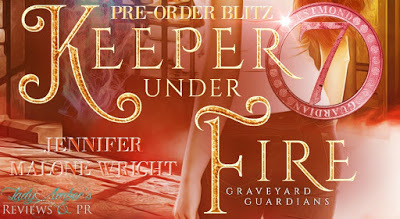 Title: Keeper Under FireAuthor: Jennifer Malone WrightGenre: Urban FantasyExpected Release Date: August 15th, 2017Cover Designer: Molly at We Got You CoveredHosted by: Lady Amber’s PR
Title: Keeper Under FireAuthor: Jennifer Malone WrightGenre: Urban FantasyExpected Release Date: August 15th, 2017Cover Designer: Molly at We Got You CoveredHosted by: Lady Amber’s PR
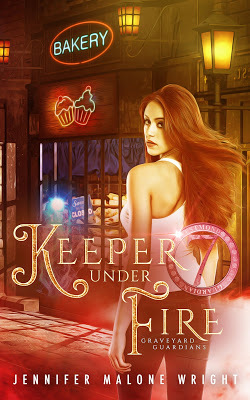 Blurb: The Reapers are coming…The Keepers are ready to fight … to defend their home and the souls, no matter what the cost.Olivia Estmond is tired of waiting to be attacked. It is time for the Keepers to strike first against the Reaper Empress. Preparing to fight is not a new concept for Liv, but living with a target on your back is not something she has ever dealt with. The Reapers were ordered to take out the entire Estmond family, and unless the Keepers did something about it, they wouldn’t stop until their mission was complete.Not long ago, Aiden was a high-ranking soldier in the Reaper Army, but now he has fallen from grace in the eyes of the Empress. More than that, he wants his best friend back. He grew up with Jack and the two were once like brothers. Now, more than ever, he needed his brother. However, what he didn’t expect from becoming a double agent, was the attraction to a sexy red headed Keeper that came with the job.
Blurb: The Reapers are coming…The Keepers are ready to fight … to defend their home and the souls, no matter what the cost.Olivia Estmond is tired of waiting to be attacked. It is time for the Keepers to strike first against the Reaper Empress. Preparing to fight is not a new concept for Liv, but living with a target on your back is not something she has ever dealt with. The Reapers were ordered to take out the entire Estmond family, and unless the Keepers did something about it, they wouldn’t stop until their mission was complete.Not long ago, Aiden was a high-ranking soldier in the Reaper Army, but now he has fallen from grace in the eyes of the Empress. More than that, he wants his best friend back. He grew up with Jack and the two were once like brothers. Now, more than ever, he needed his brother. However, what he didn’t expect from becoming a double agent, was the attraction to a sexy red headed Keeper that came with the job.

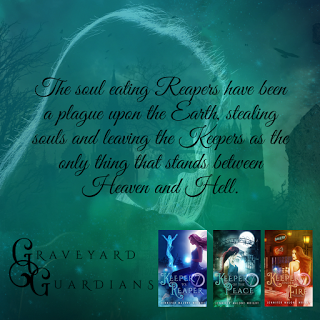

 Jennifer Malone Wright is best known for her short story series, The Vampire Hunter's Daughter. Other works include the follow up to The Vampire Hunter's Daughter series called The Arcadia Falls Chronicles, The Graveyard Guardians series, and her vampire novel called Savior. Jennifer also co-authors a series called Once Upon A Zombie Apocalypse as well the Beary Tales series. She resides in the beautiful mountains of northern Idaho with her husband and five children where she practices preparing for the zombie apocalypse. Just kidding!But seriously, between the craziness of taking care of her children, Jennifer has little time left for herself. The time she does have left, usually leading far into the night, is spent working on her beloved fiction or chatting with her equally crazy friends.Jennifer also loves coffee, has a passionate affair with red bull, wishes the sushi were better where she lives and dances while she cleans.Author Links: Website: www.jenniferwrightauthor.comTwitter: https://twitter.com/Jennichad217Facebook: https://www.facebook.com/authorjennifermalonewrightInstagram: https://instagram.com/jennifermalonewright/Amazon: http://amzn.to/2tkYBueGoodreads: https://www.goodreads.com/author/show/4824985.Jennifer_Malone_WrightPre-Order Links:Amazon: http://amzn.to/2tkYqzjibooks: https://itunes.apple.com/us/book/id1240442217Nook: https://www.barnesandnoble.com/w/keeper-under-fire-jennifer-malone-wright/1126456231?ean=2940154752609Kobo: https://www.kobo.com/us/en/ebook/keeper-under-firePick up Book One now, always free on all platforms: Amazon: http://amzn.to/2tlGwfUibooks: https://itunes.apple.com/us/book/keeper-vs.-reaper-graveyard/id892600959?mt=11Nook: http://www.barnesandnoble.com/w/keeper-vs-reaper-jennifer-malone-wright/1119856913?ean=2940046026269Kobo: https://www.kobo.com/us/en/ebook/keeper-vs-reaper-graveyard-guardians-1
Jennifer Malone Wright is best known for her short story series, The Vampire Hunter's Daughter. Other works include the follow up to The Vampire Hunter's Daughter series called The Arcadia Falls Chronicles, The Graveyard Guardians series, and her vampire novel called Savior. Jennifer also co-authors a series called Once Upon A Zombie Apocalypse as well the Beary Tales series. She resides in the beautiful mountains of northern Idaho with her husband and five children where she practices preparing for the zombie apocalypse. Just kidding!But seriously, between the craziness of taking care of her children, Jennifer has little time left for herself. The time she does have left, usually leading far into the night, is spent working on her beloved fiction or chatting with her equally crazy friends.Jennifer also loves coffee, has a passionate affair with red bull, wishes the sushi were better where she lives and dances while she cleans.Author Links: Website: www.jenniferwrightauthor.comTwitter: https://twitter.com/Jennichad217Facebook: https://www.facebook.com/authorjennifermalonewrightInstagram: https://instagram.com/jennifermalonewright/Amazon: http://amzn.to/2tkYBueGoodreads: https://www.goodreads.com/author/show/4824985.Jennifer_Malone_WrightPre-Order Links:Amazon: http://amzn.to/2tkYqzjibooks: https://itunes.apple.com/us/book/id1240442217Nook: https://www.barnesandnoble.com/w/keeper-under-fire-jennifer-malone-wright/1126456231?ean=2940154752609Kobo: https://www.kobo.com/us/en/ebook/keeper-under-firePick up Book One now, always free on all platforms: Amazon: http://amzn.to/2tlGwfUibooks: https://itunes.apple.com/us/book/keeper-vs.-reaper-graveyard/id892600959?mt=11Nook: http://www.barnesandnoble.com/w/keeper-vs-reaper-jennifer-malone-wright/1119856913?ean=2940046026269Kobo: https://www.kobo.com/us/en/ebook/keeper-vs-reaper-graveyard-guardians-1
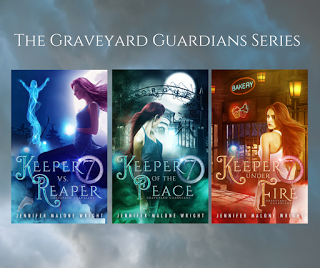

Published on June 29, 2017 05:00
June 25, 2017
IN HONOR OF MY PARENTS' 50TH ANNIVERSARY
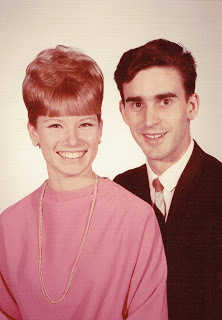 Two very special days occurred this week. Father's Day was last Sunday, and my parents' 50th anniversary was last Saturday, June 17th. While I normally post about books here, I want to share with you a different kind of story, a love story. The kind of love story we all dream of.
Two very special days occurred this week. Father's Day was last Sunday, and my parents' 50th anniversary was last Saturday, June 17th. While I normally post about books here, I want to share with you a different kind of story, a love story. The kind of love story we all dream of.This past week I've been digging through my parents' boxes of old photographs and scanning them into my computer. There are hundreds, perhaps thousands, of pictures dating back to the 40s when my mom and dad were babies, all the way through today. At times, I've been literally moved to tears. It's overwhelming to view a love story in its entirety. Well, not its entirety, because it's not over yet.
My dad, Raymond A. White, was born on April 18, 1945 in Highland Park, California (Los Angeles). My mom was born not far away in Monrovia, California on March 15, 1948. They first met each other in the summer of 1966 when they traveled via bus with a group of other Latter-day Saint young adults to a conference at Idyllwild. My dad says he spotted my mother, with her blue eyes and red hair, as they were boarding the bus and immediately knew he had to meet this girl. It was love at first sight for him.
During the few days they were at the conference, Dad played guitar, which Mom liked. He looked [image error] and sounded like Elvis. But Dad had to cut the weekend short because he had to get back to the city to attend a friend's mission farewell, where he was scheduled to speak. (For my non-Mormon friends, this was a church meeting honoring a missionary about to leave for his service.) Dad caught a ride with a couple of friends, and my mom asked if she could get a ride too. She also had a missionary farewell to attend. Turns out it was the same farewell, the same common friend, Doug Brown.
Dad was thrilled. He'd finally get a chance to have Mom all to himself for a couple of hours in the back of the truck. But Mom got car sick and moved into the cab. Disappointment.
When they got to the church, they left their camping gear in the foyer and entered the chapel where the meeting had just begun. Dad made a bold move. He took Mom's hand in his and led her to the very front of the chapel to sit beside him on the stand. After the meeting, they greeted Doug. He told them, "I always knew one day you two would meet. I expect you to be married before I get home."
Remember, they had barely known each other a few days, and had only briefly spoken a couple of times! Well, Doug's prediction came true. Dad was completely smitten. He proposed on Mom's front porch in December of 1966. They married in June 1967.
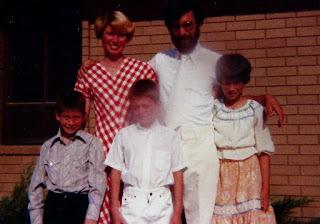 Most fairytales end there with "And they lived happily ever after." And part of that would be true. Mom and Dad have been happily married now for fifty years. But during those decades they faced a lot of trials. After having their first three kids (I'm the oldest), Mom was diagnosed with Type 1 Diabetes. A year later, in December 1976, her fourth baby, my brother Christian, was stillborn. For the next few years, Mom was in and out of the hospital; her life often hung precariously in the balance.
Most fairytales end there with "And they lived happily ever after." And part of that would be true. Mom and Dad have been happily married now for fifty years. But during those decades they faced a lot of trials. After having their first three kids (I'm the oldest), Mom was diagnosed with Type 1 Diabetes. A year later, in December 1976, her fourth baby, my brother Christian, was stillborn. For the next few years, Mom was in and out of the hospital; her life often hung precariously in the balance.But despite Mom's health, she and Dad were also quite adventurous. They moved our family to Frazier Park, a rural community in the mountains of Southern California, and built a 2400 sq. foot log home--by hand. It took a year to complete, during which we lived in a rental house, then a trailer on our property, and even a tent. We had no electricity. No plumbing. In winter, we moved into our half-finished house and stayed warm using an old pot belly wood burning stove someone gave us, and an electric heater that ran on power from a neighbor's house two properties down. We strung a train of power cords from our window through theirs. While we three kids shared the single fold-out couch and huddled to stay warm every night, Dad would spend his days working in Los Angeles, two hours away, and then spend his nights building our home.
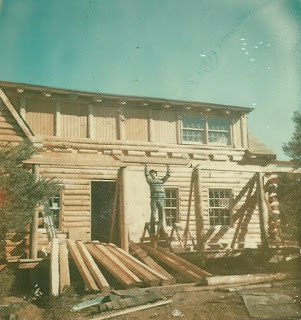
At one point, during a melt, we lost a lot of our belongings due to all the water and had to live withfriends until the weather improved. We lived in Frazier Park for five years. As kids, we loved it. Trees to climb. Endless trails and fields to explore. It was kids' paradise. But Mom didn't like that Dad was in L.A., and I was going to high school in Bakersfield, and the boys' school was pretty far too. She felt isolated and as she said, her mother hen's wings couldn't reach that far. So in 1982 Mom and Dad sold our log home and moved to La Canada, CA where Dad had just been hired as a computer programmer for Jet Propulsion Laboratory.
I could tell you countless stories about my parents during those years, how Mom tried to work the graveyard shift at Denny's on the Grapevine and lasted only two days because her diabetes didn't like the schedule (and she spilled milkshakes on some customers), and about our vacation to Hume Lake cut short because Dad just had to call into work to see if they needed him (and where my brother Trevor got a fish hook caught in his finger), and how Mom, who was a professional seamstress, made all my Dad's suits and my dresses, as well as dolls for me and teddy bears for my brothers.
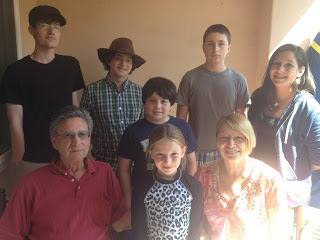 Mom and Dad faced financial hardships and diabetes, but somehow always managed to remain faithful to the Church and to God, and just as faithful to each other. Growing up, I never heard my parents argue. Disagree sometimes, yes, but they never raised their voices at each other and always showed the utmost respect toward one another. Dad helped around the house and Mom repaired the washing machine or rewired the lighting or built garden walls. They (or I should say Mom) owned and operated many businesses. Mom became a hearing aid specialist. In fact, Mom pursued many interests and educational opportunities, and Dad always supported her 100%.
Mom and Dad faced financial hardships and diabetes, but somehow always managed to remain faithful to the Church and to God, and just as faithful to each other. Growing up, I never heard my parents argue. Disagree sometimes, yes, but they never raised their voices at each other and always showed the utmost respect toward one another. Dad helped around the house and Mom repaired the washing machine or rewired the lighting or built garden walls. They (or I should say Mom) owned and operated many businesses. Mom became a hearing aid specialist. In fact, Mom pursued many interests and educational opportunities, and Dad always supported her 100%.They always loved each other. They held hands (still do) in public. Shared kisses in the kitchen. Said "I love you" often. After 50 years, they still smile at each other.
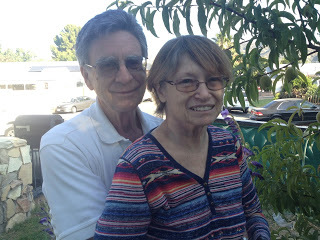 Between the 1980s and today, Mom and Dad traveled Israel and Ireland, supported their three kids through missions, college, and marriage, and rejoiced in the births of sixteen grandchildren. They endured the loss of their own parents, the loss of jobs and forced early retirements, and failed investments. They continue to face health problems and even injury. This past year saw Mom in the hospital twice near death. Dad refused to leave her side. During her first near miss, Dad slept on the floor beside her hospital bed every night for a week. During the second, the hospital gave him a fold out chair to sleep in. When Mom fell in March and broke her pelvis in three places resulting in a three month recuperation, Dad did everything for her. Literally. As their daughter, and because they live in my home, I've had the privilege of witnessing my Dad's love for and devotion to my mom first hand. But it is nothing new. I've seen this same devotion throughout my entire life.
Between the 1980s and today, Mom and Dad traveled Israel and Ireland, supported their three kids through missions, college, and marriage, and rejoiced in the births of sixteen grandchildren. They endured the loss of their own parents, the loss of jobs and forced early retirements, and failed investments. They continue to face health problems and even injury. This past year saw Mom in the hospital twice near death. Dad refused to leave her side. During her first near miss, Dad slept on the floor beside her hospital bed every night for a week. During the second, the hospital gave him a fold out chair to sleep in. When Mom fell in March and broke her pelvis in three places resulting in a three month recuperation, Dad did everything for her. Literally. As their daughter, and because they live in my home, I've had the privilege of witnessing my Dad's love for and devotion to my mom first hand. But it is nothing new. I've seen this same devotion throughout my entire life. 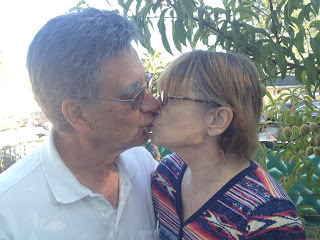 Today, Mom and Dad enjoy binge watching TV shows together, sometimes devouring ten or more seasons in a single month. They enjoy going out to lunch when Mom feels up to it, or walking to the park (Dad pushes Mom in her wheelchair. They call it walking and rolling.) They go to the movies, travel to Oklahoma and Washington to visit grandchildren, and spend time here at home with their grandchildren here. Dad tutors the kids in math or drives them wherever and whenever they need to go. Mom watches movies and talks with the kids about all kinds of topics.
Today, Mom and Dad enjoy binge watching TV shows together, sometimes devouring ten or more seasons in a single month. They enjoy going out to lunch when Mom feels up to it, or walking to the park (Dad pushes Mom in her wheelchair. They call it walking and rolling.) They go to the movies, travel to Oklahoma and Washington to visit grandchildren, and spend time here at home with their grandchildren here. Dad tutors the kids in math or drives them wherever and whenever they need to go. Mom watches movies and talks with the kids about all kinds of topics.When I look at my parents, when I look back on the past fifty years of their life together, I can't help but feel incredibly lucky. Lucky to have had parents who are as close to perfect as people can get (at least from my perspective). Lucky to have parents who have been the best examples possible as human beings, as spouses, as parents, as Christians. Lucky to be able to say my Mom and Dad have been my best friends throughout my life. But more importantly, they have always been each other's best friend.
You know, they just don't make love stories like this anymore. Theirs is one in a million.
Happy Anniversary, Mom & Dad!
Published on June 25, 2017 06:00
June 23, 2017
BOOK REVIEW: MANJHI MOVES A MOUNTAIN by Nancy Churnin
* THE ROCK OF IVANORE on Audible!
*Cover Reveal: SEER OF THE GUILDE
* $50 Amazon Gift Card Giveaway
__________________________________________
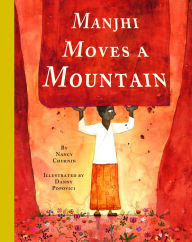 MANJHI MOVES A MOUNTAIN
MANJHI MOVES A MOUNTAIN
Nancy Churnin; Illustrated by Danny Popovici
Creston Books
Ages 5 & up
Available September 1, 2017
Dashrath Manjhi used a hammer and chisel, grit, determination, and twenty years to carve a path through the mountain separating his poor village from the nearby village with schools, markets, and a hospital. Manjhi Moves a Mountain shows how everyone can make a difference if their heart is big enough.
MY REVIEW:
I don't review many picture books, so when I do, it's because I really love it. MANJHI MOVES A MOUNTAIN is the true story of Dashrath Manjhi who spent twenty-two years carving a road through the mountain between two villages. Using nothing but a hammer and a chisel, he devoted his life to making medical care, clean water, and schools more accessible to his home village in India.
Manjhi's story is relevant on so many levels. First, the text is accessible and engaging for young readers. Older children can easily read this story on their own. Second, the illustrations are simple yet really lovely, allowing readers a glimpse into a world and culture so different than their own and yet with the human needs and emotions we all share.
Finally, in this time when diversity in children's literature is hot issue, this book perfectly fills that need. Manjhi did not live hundreds of years ago. He died only in 2007, so his story is a contemporary one. I think it is important that our children learn about people TODAY who are doing great things, who are changing the world, who are making a difference.
MANJHI MOVES A MOUNTAIN can be used to motivate children to think of ways they can make a difference in their own families and communities. At first, Manjhi was mocked by his people, but eventually they came to appreciate and revere him. This story can also give children courage to pursue their dreams without fear of what others think of them.
This is a story that can be shared again and again, and promises to prompt many thoughtful and inspiring discussions in homes and classrooms across the nation.





*Cover Reveal: SEER OF THE GUILDE
* $50 Amazon Gift Card Giveaway
__________________________________________
 MANJHI MOVES A MOUNTAIN
MANJHI MOVES A MOUNTAINNancy Churnin; Illustrated by Danny Popovici
Creston Books
Ages 5 & up
Available September 1, 2017
Dashrath Manjhi used a hammer and chisel, grit, determination, and twenty years to carve a path through the mountain separating his poor village from the nearby village with schools, markets, and a hospital. Manjhi Moves a Mountain shows how everyone can make a difference if their heart is big enough.
MY REVIEW:
I don't review many picture books, so when I do, it's because I really love it. MANJHI MOVES A MOUNTAIN is the true story of Dashrath Manjhi who spent twenty-two years carving a road through the mountain between two villages. Using nothing but a hammer and a chisel, he devoted his life to making medical care, clean water, and schools more accessible to his home village in India.
Manjhi's story is relevant on so many levels. First, the text is accessible and engaging for young readers. Older children can easily read this story on their own. Second, the illustrations are simple yet really lovely, allowing readers a glimpse into a world and culture so different than their own and yet with the human needs and emotions we all share.
Finally, in this time when diversity in children's literature is hot issue, this book perfectly fills that need. Manjhi did not live hundreds of years ago. He died only in 2007, so his story is a contemporary one. I think it is important that our children learn about people TODAY who are doing great things, who are changing the world, who are making a difference.
MANJHI MOVES A MOUNTAIN can be used to motivate children to think of ways they can make a difference in their own families and communities. At first, Manjhi was mocked by his people, but eventually they came to appreciate and revere him. This story can also give children courage to pursue their dreams without fear of what others think of them.
This is a story that can be shared again and again, and promises to prompt many thoughtful and inspiring discussions in homes and classrooms across the nation.





Published on June 23, 2017 05:00
BLOG TOUR: THE GHOST OF ME AND YOU by Kelly Oram
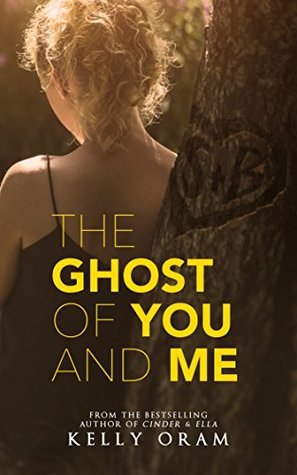 The Ghost of You and Me by Kelly Oram
The Ghost of You and Me by Kelly Oram How do you tell someone who hates you and blames you for the death of his best friend that you miss him? From the bestselling teen and young adult author of Cinder & Ella comes a new heart-wrenching romance sure to bring all the feels. The tragic death of Spencer Schott unravels the lives of the two people he loved most—his girlfriend, Bailey, and his best friend, Wes. Secrets and guilt from that fateful night keep both Bailey and Wes from overcoming Spencer’s loss and moving on with their lives. Now, nearly a year later, both Bailey and Wes are still so broken over what happened that Spencer can’t find peace in the afterlife. In order to put his soul to rest, he’s given one chance to come back and set things right...even if that means setting up his girlfriend with his best friend. With the emotional resonance of Jellicoe Road and the magical realism of The Lovely Bones, The Ghost of You and Me is a story about overcoming grief, finding redemption for past mistakes, and the healing power of friendship and love. Fans of John Green, Sarah Dessen, and Nicholas Sparks are sure to love this haunting new tale from Kelly Oram. This is a clean young adult romance stand alone novel that reads like contemporary drama romance and has just a touch of magical realism.
How do you tell someone who hates you and blames you for the death of his best friend that you miss him? From the bestselling teen and young adult author of Cinder & Ella comes a new heart-wrenching romance sure to bring all the feels. The tragic death of Spencer Schott unravels the lives of the two people he loved most—his girlfriend, Bailey, and his best friend, Wes. Secrets and guilt from that fateful night keep both Bailey and Wes from overcoming Spencer’s loss and moving on with their lives. Now, nearly a year later, both Bailey and Wes are still so broken over what happened that Spencer can’t find peace in the afterlife. In order to put his soul to rest, he’s given one chance to come back and set things right...even if that means setting up his girlfriend with his best friend. With the emotional resonance of Jellicoe Road and the magical realism of The Lovely Bones, The Ghost of You and Me is a story about overcoming grief, finding redemption for past mistakes, and the healing power of friendship and love. Fans of John Green, Sarah Dessen, and Nicholas Sparks are sure to love this haunting new tale from Kelly Oram. This is a clean young adult romance stand alone novel that reads like contemporary drama romance and has just a touch of magical realism.

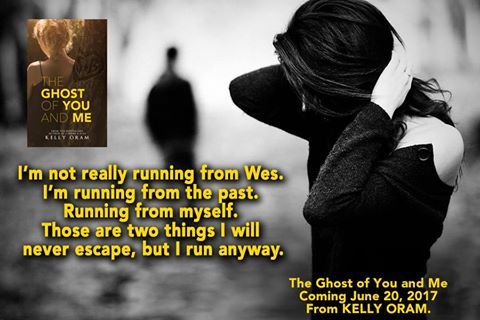
 Author Kelly Oram Kelly Oram wrote her first novel at age fifteen--a fan fiction about her favorite music group, The Backstreet Boys, for which her family and friends still tease her. She's obsessed with reading, talks way too much, and likes to eat frosting by the spoonful. She lives outside of Phoenix, Arizona with her husband, four children, and her cat, Mr. Darcy. Website * Twitter * Facebook
Author Kelly Oram Kelly Oram wrote her first novel at age fifteen--a fan fiction about her favorite music group, The Backstreet Boys, for which her family and friends still tease her. She's obsessed with reading, talks way too much, and likes to eat frosting by the spoonful. She lives outside of Phoenix, Arizona with her husband, four children, and her cat, Mr. Darcy. Website * Twitter * Facebook  $50 Amazon Gift Card or Paypal Cash Giveaway Ends 7/15/17 Open only to those who can legally enter, receive and use an Amazon.com Gift Code or Paypal Cash. Winning Entry will be verified prior to prize being awarded. No purchase necessary. You must be 18 or older to enter or have your parent enter for you. The winner will be chosen by rafflecopter and announced here as well as emailed and will have 48 hours to respond or a new winner will be chosen. This giveaway is in no way associated with Facebook, Twitter, Rafflecopter or any other entity unless otherwise specified. The number of eligible entries received determines the odds of winning. Giveaway was organized by Kathy from I Am A Reader and sponsored by the author. VOID WHERE PROHIBITED BY LAW.
$50 Amazon Gift Card or Paypal Cash Giveaway Ends 7/15/17 Open only to those who can legally enter, receive and use an Amazon.com Gift Code or Paypal Cash. Winning Entry will be verified prior to prize being awarded. No purchase necessary. You must be 18 or older to enter or have your parent enter for you. The winner will be chosen by rafflecopter and announced here as well as emailed and will have 48 hours to respond or a new winner will be chosen. This giveaway is in no way associated with Facebook, Twitter, Rafflecopter or any other entity unless otherwise specified. The number of eligible entries received determines the odds of winning. Giveaway was organized by Kathy from I Am A Reader and sponsored by the author. VOID WHERE PROHIBITED BY LAW. a Rafflecopter giveaway
Published on June 23, 2017 00:00
June 22, 2017
NEW RELEASE & GIVEAWAY: TORCHED by Liz Long
 Title: TorchedAuthor: Liz LongGenre: Urban FantasyCover Designer: Indie-Spired DesignHosted by: Lady Amber’s PR
Title: TorchedAuthor: Liz LongGenre: Urban FantasyCover Designer: Indie-Spired DesignHosted by: Lady Amber’s PR
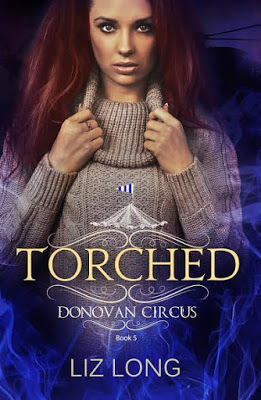 Blurb:Lucy Sullivan and her circus family are finally back where they belong - in the spotlight and with each other. Even ringmaster Sheffield Donovan is in good spirits as their show delights audiences each night. Life is almost back to normal.Until the US government appears in the form of one General Baker and his army of soldiers. At the threat of worldwide exposure, life as the Donovan Circus knows it is over. Cornered into the General’s terrible experiments, they have no rights, no friends, and no hope of escape. Lucy will lose more than one loved one, and perhaps her own life, in the process.The Donovan Circus will face the worst danger yet - can Lucy take down an entire government sector, or will the gifted world finally be destroyed once and for all?
Blurb:Lucy Sullivan and her circus family are finally back where they belong - in the spotlight and with each other. Even ringmaster Sheffield Donovan is in good spirits as their show delights audiences each night. Life is almost back to normal.Until the US government appears in the form of one General Baker and his army of soldiers. At the threat of worldwide exposure, life as the Donovan Circus knows it is over. Cornered into the General’s terrible experiments, they have no rights, no friends, and no hope of escape. Lucy will lose more than one loved one, and perhaps her own life, in the process.The Donovan Circus will face the worst danger yet - can Lucy take down an entire government sector, or will the gifted world finally be destroyed once and for all?

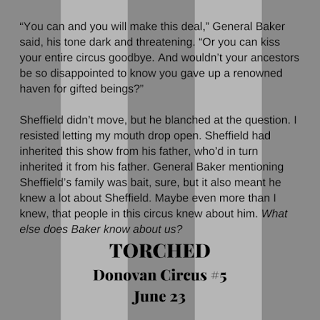

 Liz Long is a proud graduate of Longwood University and author of ten novels. Her inspiration comes from action and thriller genres and she spends entirely too much time watching superhero movies. Her day job as Associate Editor includes writing for a magazine publisher in Roanoke, VA. She is also the director of the Roanoke Regional Writers Conference and the annual Roanoke Author Invasion.Comic book readers and fans of CW Network smash hits Arrow, The Flash, Legends of Tomorrow, and Netflix’s Daredevil will root for Liz Long’s bestselling YA summer series as the HoA’s gifted teen superheroes attempt to save their city from its impending demise. The Donovan Circus series has best been described as "X-Men meets the circus." Adult horror story Witch Hearts tells the tale of a serial killer hunting witches for their powers. New Adult PNR A Reaper Made is about a teen Reaper who gets caught between falling in love or saving her sister's soul. All titles are available for paperback or ebook on Amazon.To learn more about Liz (including more information on her books, plus writing, marketing, and social media tips), visit her website: http://lizclong.com.Author Links:Facebook: http://facebook.com/lizclongauthorWebsite: http://lizclong.comAmazon: http://amzn.to/2slwGtzTwitter: http://twitter.com/lizclongInstagram: http://instagram.com/lizclong07BookBub: https://www.bookbub.com/authors/liz-longNewsletter signup (new subscribers get 2 free ebooks, including DC #1): http://www.subscribepage.com/lizlongauthornewsletterBuy Links:Gifted: http://amzn.to/2spQzAHBurned: http://amzn.to/2syn13AHunted: http://amzn.to/2sll5uqIgnited: http://amzn.to/2reT8RUTorched Buy Links:Amazon: http://amzn.to/2sZ6piuiBooks: https://itunes.apple.com/us/book/id1245943249Kobo: https://www.kobo.com/us/en/ebook/torched-9B&N: https://www.barnesandnoble.com/s/2940154692431
Liz Long is a proud graduate of Longwood University and author of ten novels. Her inspiration comes from action and thriller genres and she spends entirely too much time watching superhero movies. Her day job as Associate Editor includes writing for a magazine publisher in Roanoke, VA. She is also the director of the Roanoke Regional Writers Conference and the annual Roanoke Author Invasion.Comic book readers and fans of CW Network smash hits Arrow, The Flash, Legends of Tomorrow, and Netflix’s Daredevil will root for Liz Long’s bestselling YA summer series as the HoA’s gifted teen superheroes attempt to save their city from its impending demise. The Donovan Circus series has best been described as "X-Men meets the circus." Adult horror story Witch Hearts tells the tale of a serial killer hunting witches for their powers. New Adult PNR A Reaper Made is about a teen Reaper who gets caught between falling in love or saving her sister's soul. All titles are available for paperback or ebook on Amazon.To learn more about Liz (including more information on her books, plus writing, marketing, and social media tips), visit her website: http://lizclong.com.Author Links:Facebook: http://facebook.com/lizclongauthorWebsite: http://lizclong.comAmazon: http://amzn.to/2slwGtzTwitter: http://twitter.com/lizclongInstagram: http://instagram.com/lizclong07BookBub: https://www.bookbub.com/authors/liz-longNewsletter signup (new subscribers get 2 free ebooks, including DC #1): http://www.subscribepage.com/lizlongauthornewsletterBuy Links:Gifted: http://amzn.to/2spQzAHBurned: http://amzn.to/2syn13AHunted: http://amzn.to/2sll5uqIgnited: http://amzn.to/2reT8RUTorched Buy Links:Amazon: http://amzn.to/2sZ6piuiBooks: https://itunes.apple.com/us/book/id1245943249Kobo: https://www.kobo.com/us/en/ebook/torched-9B&N: https://www.barnesandnoble.com/s/2940154692431

 One of our tigers roared, triggering Suzy the elephant to release a trumpet of warning. These strange men were probably stirring up circus members who weren’t already at the party, scaring them half to death. My stomach clenched at the thought; my whole family, practically everyone I knew and loved, was right behind me in the Big Top.I have to protect them.It was the only thought I had, the only one that mattered. I would do whatever it took to keep my people alive. The soldier directly in front of me snapped to get my attention, instantly annoying me. “Where is Sheffield Donovan?”My chin jutted out. “Who’s asking?”
One of our tigers roared, triggering Suzy the elephant to release a trumpet of warning. These strange men were probably stirring up circus members who weren’t already at the party, scaring them half to death. My stomach clenched at the thought; my whole family, practically everyone I knew and loved, was right behind me in the Big Top.I have to protect them.It was the only thought I had, the only one that mattered. I would do whatever it took to keep my people alive. The soldier directly in front of me snapped to get my attention, instantly annoying me. “Where is Sheffield Donovan?”My chin jutted out. “Who’s asking?” A new, strong voice answered behind the soldier. It definitely belonged to a man of authority. “The United States government.”
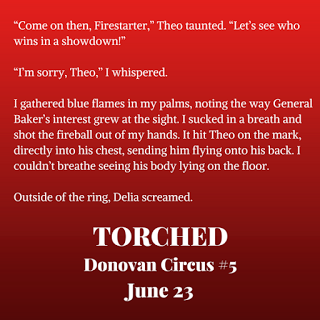
 a Rafflecopter giveaway
a Rafflecopter giveaway

Published on June 22, 2017 12:48
June 17, 2017
COME WITH ME TO ALGONAC...THE FINAL DAY
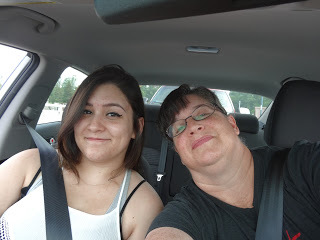 As I write this, I am sitting in front of my computer in my home office in Santa Clarita, CA. I left SLC this morning and took a Delta flight back to civilization. My first thought as I stepped off the place was, "It is stinking hot here!"
As I write this, I am sitting in front of my computer in my home office in Santa Clarita, CA. I left SLC this morning and took a Delta flight back to civilization. My first thought as I stepped off the place was, "It is stinking hot here!"Yesterday, Friday, was our 5th and final day in Algonac. Carissa and I woke late and ate leftover fried mushrooms for breakfast. Yum! Having pretty much exhausted everything possible to do and see in Algonac, we decided to drive to Flint and grab lunch and maybe a nap before our afternoon flight to Utah.
You might wonder why we got such a late flight flight out of town (departed Flint at 11:30am and arrived in SLC at 10:30pm). That's because flights out of Flint seem to be few and far between. Despite the luxury of the airport, it was nearly empty the whole time we were there. When we got our boarding passes and asked about our flight, the attendant said, "There's only one." Well, we did see there was a second flight later in the evening, heading to Oklahoma, I think. Anyway, I didn't really have many flights to choose from.
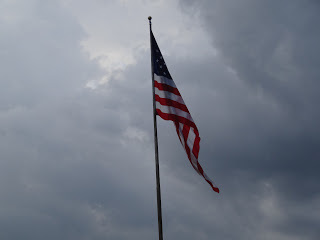
On our way to Flint, I am sad to say that a bird struck our car. It literally crashed into the windshield. Nothing could have been done to prevent it. Being the bird-lover she is, Carissa got out of the car and scooped up the fatally wounded bird into her gentle palms. We did try to locate a bird rescue, but the nearest one was in Ann Arbor and I had no idea how far away that was. It wouldn't have mattered anyway. The little thing died a few minutes later, which was probably for the best. We just felt at peace that at least the creature hadn't died alone or on the street where it would have been run over. After it passed, Carissa laid it beneath a tree. Sadly, we've notice a lot of roadkill along the roads to and from Algonac. Beaver, birds, and deer galore. So much wildlife here--I guess it's what happens when nature and man collide.
Once in Flint, we stopped at The Olive Garden for lunch. Yes, Carissa thoroughly washed her hands first!!! We enjoyed soup and salad. I took a short nap in the car, then we filled up the tank and drove to the airport where we just hung out for a while. The flight to Chicago was uneventful. We had an unbearingly long three-hour layover there. We ate some Chinese food, and I chatted with a lovely Mormon couple who were heading to London and shared our experiences with family history. Eventually we got on the plane. The seats were so uncomfortable! It felt like forever before we finally landed in SLC.
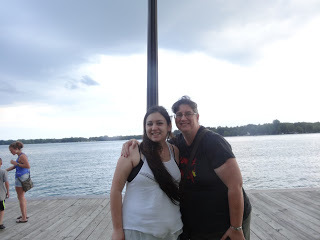
We reached Carissa's home at about 11:30pm only to learn that my son, Stuart, was just ten minutes away in Sandy with his Boy Scout troop. They had just returned from a kayaking/camping trip in Yellowstone and were sleeping at a friend's house before heading back to California today. So of course we had to drive to Sandy to see Stuart. Just a short visit. Stuart came outside to meet us--wearing his Sunday suit complete with bow tie. Why? Because, he explained, all his clothes had gotten wet so he was going to sleep in his suit. (They brought their suits to visit the temple earlier that day.) I suggested he at least not sleep in his tie.
Back to Carissa's. I had a deep night's sleep. Got up. Showered. Enjoyed a lovely breakfast made by Carissa and her husband Cash. Visited with my grandbirdies, Mango and Zooks. And left for the airport. There were some tears on Carissa's part. It's hard to say goodbye. We miss each other so much. I hate living so far from her, but this week was a dream come true for me, and I'm so glad I got to share it with her...and with all of you.
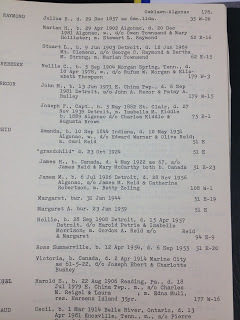
What's next?
First on my list is to figure out the identities of the two additional family members buried in the Algonac cemetery. Next, I will begin the planning stages for writing a book. There are still lots of questions to answer. I am hoping to visit my Aunt Larry soon to ask those questions. Maybe, if all goes well, by the end of 2018 I may have a rough draft in hand. We shall see. In the meantime, I'm just glad I finally got to Algonac, to walk where my ancestors walked, to take in the view they once enjoyed, and to learn more about the town they loved so much.
Published on June 17, 2017 20:45
June 16, 2017
BOOK BLITZ: THE CURE by Tania Hagan
 Title: The Cure SeriesAuthor: Tania HaganGenre: YA DystopianPublisher: CHBB PublishingHosted by: Lady Amber's PR
Title: The Cure SeriesAuthor: Tania HaganGenre: YA DystopianPublisher: CHBB PublishingHosted by: Lady Amber's PR
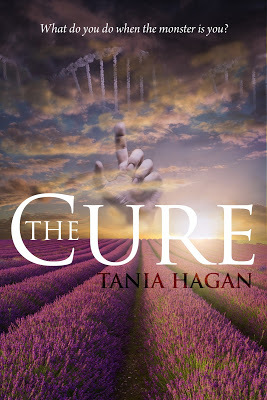 Blurb: Beautiful and brilliant, eighteen-year-old Genesis Weatherby lives a charmed life as the clone of a long-dead silent film star. She is loved by her close-knit family as well as her two best friends, and being a clone isn't so bad when everyone in the world is one too. Thanks to an organization known as GOD, there have been no Original births in one hundred and thirty years. In a successful attempt to eradicate cancer, GOD has taken control of human procreation, and only the human copies that are proven to be free of the once devastating disease are allowed to thrive. Genny never questions anything about her world, until she meets handsome and mysterious Nat Wilkinson. Now, she is forced to make choices that can alter the course of her life, as well as the lives of everyone on the planet.
Blurb: Beautiful and brilliant, eighteen-year-old Genesis Weatherby lives a charmed life as the clone of a long-dead silent film star. She is loved by her close-knit family as well as her two best friends, and being a clone isn't so bad when everyone in the world is one too. Thanks to an organization known as GOD, there have been no Original births in one hundred and thirty years. In a successful attempt to eradicate cancer, GOD has taken control of human procreation, and only the human copies that are proven to be free of the once devastating disease are allowed to thrive. Genny never questions anything about her world, until she meets handsome and mysterious Nat Wilkinson. Now, she is forced to make choices that can alter the course of her life, as well as the lives of everyone on the planet.

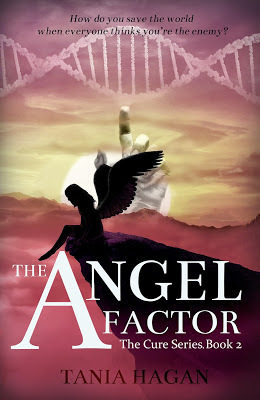 Blurb:Genesis Weatherby has been living the life of a fugitive for over three years. Genny, Nat, and their two children have found some comfort in the remote mountain village of Fieldmont, Oregon, where Chosen members, as well as their sympathizers, live inside a forgotten government bunker.GOD has just named Genny and Nat as their primary targets in the organization's war against Original births. More importantly, they’ve blamed the couple for the alarming number of cancer cases in recent years.When the GOD-created deadly Angel virus strikes close to home, Genny devises a dangerous plan to stomp out GOD once and for all.But, will Nat and their friends go along with her idea? And, will Genny be able to live long enough to carry out her dangerous mission? Where can she run when everyone in the world thinks she’s their enemy? In the end, will she really know who’s on her side? And, will it be too late for everyone?When stopping GOD and the Angel virus becomes Genny’s primary goal, she has to make some life-altering decisions that might lead to the destruction of her entire family.
Blurb:Genesis Weatherby has been living the life of a fugitive for over three years. Genny, Nat, and their two children have found some comfort in the remote mountain village of Fieldmont, Oregon, where Chosen members, as well as their sympathizers, live inside a forgotten government bunker.GOD has just named Genny and Nat as their primary targets in the organization's war against Original births. More importantly, they’ve blamed the couple for the alarming number of cancer cases in recent years.When the GOD-created deadly Angel virus strikes close to home, Genny devises a dangerous plan to stomp out GOD once and for all.But, will Nat and their friends go along with her idea? And, will Genny be able to live long enough to carry out her dangerous mission? Where can she run when everyone in the world thinks she’s their enemy? In the end, will she really know who’s on her side? And, will it be too late for everyone?When stopping GOD and the Angel virus becomes Genny’s primary goal, she has to make some life-altering decisions that might lead to the destruction of her entire family.

 Tania Hagan was born in Illinois, but moved to Southern California as a young teen. She graduated from the University of California, Irvine with a degree in Social Science and Psychology. She began her writing career shortly after school, when she wrote for a major business magazine. She also read the nightly business report for the company's TV news. At the same time, she produced, and reported for a weekly TV news magazine program.After she was married, Tania and her husband moved back to the Chicago area, where she worked briefly as a stringer for a local newspaper. She also became a successful Realtor, and continued to write for online, as well as for print publications.They have one beautiful daughter. Her dream of dreams is to eventually adopt many more children. Out of everything she's ever accomplished, she is most proud of being a mom.Author Links: Facebook: https://www.facebook.com/TaniaHaganAuthor/Twitter: https://twitter.com/tania_haganGoodreads: https://www.goodreads.com/author/show/14739174.Tania_HaganAmazon: http://amzn.to/2lAneNOBuy Link: The Cure: http://amzn.to/2t79s8BThe Angel Factor: http://amzn.to/2rlmPRc
Tania Hagan was born in Illinois, but moved to Southern California as a young teen. She graduated from the University of California, Irvine with a degree in Social Science and Psychology. She began her writing career shortly after school, when she wrote for a major business magazine. She also read the nightly business report for the company's TV news. At the same time, she produced, and reported for a weekly TV news magazine program.After she was married, Tania and her husband moved back to the Chicago area, where she worked briefly as a stringer for a local newspaper. She also became a successful Realtor, and continued to write for online, as well as for print publications.They have one beautiful daughter. Her dream of dreams is to eventually adopt many more children. Out of everything she's ever accomplished, she is most proud of being a mom.Author Links: Facebook: https://www.facebook.com/TaniaHaganAuthor/Twitter: https://twitter.com/tania_haganGoodreads: https://www.goodreads.com/author/show/14739174.Tania_HaganAmazon: http://amzn.to/2lAneNOBuy Link: The Cure: http://amzn.to/2t79s8BThe Angel Factor: http://amzn.to/2rlmPRc

Published on June 16, 2017 02:00

